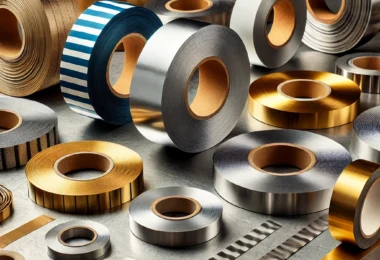Quality control and testing are integral aspects of the manufacturing and application of SA 516 Gr 70 steel plates. SA 516 Gr 70 is a versatile and widely used material in various industries, particularly in constructing pressure vessels and boilers. To ensure the safety and reliability of these critical applications, rigorous quality control and testing procedures are employed throughout the steel plate’s production process. In this blog, we will delve into the importance of quality control and testing in the context of SA 516 Gr 70, exploring the various methods and standards that ensure the highest quality and performance.
Quality Control in SA 516 Gr 70 Steel Plate Manufacturing
Raw Material Inspection:
The quality control begins with inspecting the raw materials used in manufacturing SA 516 Gr 70 steel plates. The primary raw material is carbon steel, which must meet specific standards and specifications, such as ASTM A516. Mill certificates and material traceability are essential, ensuring that the steel used is of the required quality.
Chemical Composition:
One of the critical aspects of quality control is verifying the chemical composition of SA 516 Gr 70 steel. Chemical analysis ensures that the material composition meets the required standards, including the percentage of carbon, manganese, phosphorus, sulfur, and other elements.
Heat Treatment and Mechanical Properties:
Heat treatment processes like normalization and stress relieving are vital for enhancing the mechanical properties of SA 516 Gr 70. The steel plates undergo controlled heating and cooling cycles to achieve strength, toughness, and flexibility.
Ultrasonic Testing (UT):
Ultrasonic testing is employed to detect internal defects such as voids, inclusions, and discontinuities in the steel plate. This non-destructive testing method ensures the material is free from hidden flaws that could compromise its integrity.
Dimensional Inspection:
The dimensions of SA 516 Gr 70 steel plates are meticulously checked to ensure they conform to the specified tolerances and thickness. Accurate dimensions are crucial for the plates to fit properly in pressure vessels and boilers.
Testing Methods for SA 516 Gr 70 Steel Plate
Tensile Testing:
Tensile testing evaluates the strength and flexibility of the steel plate. It involves subjecting a sample to controlled tension until it breaks, measuring parameters like ultimate tensile strength, yield strength, and elongation.
Charpy Impact Testing:
Charpy impact testing assesses the steel’s resistance to sudden impact or shock loads. This test determines the impact energy absorbed by the material and its notch toughness.
Hardness Testing:
Hardness testing measures the hardness of the steel plate’s surface. The Brinell, Rockwell, or Vickers hardness test methods are commonly used to assess the material’s resistance to deformation.
Hydrostatic Testing:
For pressure vessel applications, hydrostatic testing is crucial. It involves filling the vessel with water and pressurizing it to test its integrity under pressure.
X-ray and Radiographic Testing:
These non-destructive testing methods are used to inspect welds and identify any defects or discontinuities within the welds.
Quality Standards for SA 516 Gr 70 Steel Plate
The quality control and testing of SA 516 Gr 70 steel plates adhere to various international standards, including:
ASTM A516/A516M: Standard Specification for Pressure Vessel Plates, Carbon Steel, for Moderate and Lower Temperature Service.
ASME BPVC: The American Society of Mechanical Engineers Boiler and Pressure Vessel Code, which includes specific requirements for SA 516 Gr 70 steel.
Conclusion
Quality control and testing are pivotal in ensuring the reliability and safety of SA 516 Gr 70 steel plates, widely used in pressure vessel and boiler applications. Manufacturers, inspectors, and end-users must adhere to rigorous standards and procedures to guarantee the quality and performance of these critical components. By maintaining strict control over the material’s composition, heat treatment, and mechanical properties, as well as conducting various tests for defects and performance, SA 516 Gr 70 steel plates can meet the highest quality standards and contribute to safer and more efficient industrial processes.

















